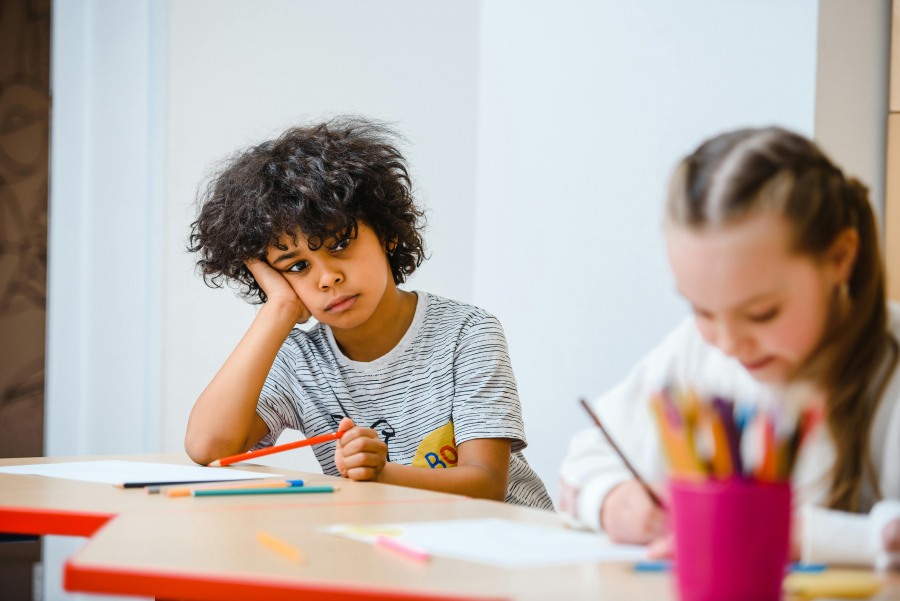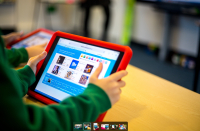The role of a teacher has always been dynamic and demanding, challenging educators to adapt to the changing needs of students and society. Today, this adaptation involves embracing the digital revolution that is transforming the educational landscape. As we navigate through this era of rapid technological change, the potential for digital solutions to enhance classroom engagement and learning experiences is immense. This guide aims to explore the myriad ways in which digital tools can be harnessed to empower teachers, making the learning journey more interactive, engaging, and effective for students.
Digital technology in education is not just a fleeting trend; it represents a fundamental shift in how we approach teaching and learning. With each passing year, new tools and resources emerge, offering fresh and innovative ways to captivate the minds of learners. These digital solutions provide an avenue for educators to enhance their teaching methods, making lessons more accessible, personalised, and aligned with the realities of a world increasingly reliant on technology. This shift is not just about keeping pace with technological advances; it's about transforming the educational experience in a way that resonates with today's learners and prepares them for a future where digital fluency is key.
As we delve into this exploration, we will uncover the various facets of digital education, from understanding its growing significance to examining how it is reshaping the traditional classroom. We will look at key digital solutions that are making waves in today's classrooms, delve into strategies for maximising engagement through interactive technology, and discover how integrating online resources into teaching strategies can create a more dynamic learning environment. This journey will also involve evaluating the impact of these tools on student outcomes and exploring how they enhance collaborative learning.
Understanding the Digital Shift in Education
The shift towards digital education is not just about keeping up with technological trends; it's about responding to the learning needs of a new generation. Dr. Nicole Archard, Principal of Loreto College Marryatville, articulates this necessity succinctly: “In a world marked by rapid technological advancement and global connectivity, Generation Alpha requires digital literacy and especially the ability to critically analyse digital texts in order to assist children and adolescents in building resilience and, as a result, wellbeing outcomes." This statement captures the essence of our evolving educational landscape – one where digital literacy becomes as fundamental as traditional literacy.
Digital education is more than just a new teaching tool; it's a bridge to a world that students are already a part of. Our students are digital natives, born into a world where information is at their fingertips, where global connectivity is a given, and where digital interaction is a significant part of their daily lives. The classroom, therefore, must reflect this reality. It must be a space that not only acknowledges but embraces and integrates the digital world in which our students live.
Key Digital Solutions for Today's Classrooms
In recent years, there has been a significant investment in educational technology, with £583 million invested in UK EdTech companies. This investment reflects a growing recognition of the importance of digital tools in education. Carrie Anne Philbin, a computing teacher and director of learning at the Institute of Imagination, points out the creative potential of integrating digital skills into the curriculum. She notes, "Thinking creatively about how digital skills are incorporated into a school’s curriculum can yield numerous benefits and can boost pastoral provision just as well as subject teaching. Pupils can code, for example, as a way to express how they feel or build how emotions might look, bringing a fun, creative element to emotional self-regulation as well as teaching early game development."
The surge in digital solutions for the classroom is not just about providing new tools but about reimagining how education can be delivered. From interactive whiteboards to educational apps and online platforms, these technologies offer diverse ways to engage students, cater to different learning styles, and make learning more accessible and inclusive.
Maximising Engagement with Interactive Technology
Interactive technology has become a cornerstone of modern education, with approximately 64% of UK schools now embedding technology into everyday teaching and learning practices. This widespread adoption is transforming teaching approaches and learning outcomes. The use of interactive tools - from smart boards to educational software - not only makes learning more engaging but also allows for a more tailored educational experience that can cater to individual student needs.
This integration of technology in education is about more than just keeping students interested; it's about providing an interactive platform that encourages active learning and participation. By incorporating technology into lessons, teachers can create a more dynamic classroom environment that not only captures the attention of students but also fosters a deeper understanding of the material.
Integrating Online Resources into Your Teaching Strategy
When it comes to integrating online resources into educational strategies, not all digital tools are created equal. As stated in an article by Education Executive, "Not all EdTech created is equal, and its usefulness varies across learners. Teachers, being closest to the students, play a pivotal role in selecting high-quality EdTech that aligns with the specific needs of their learners." This statement underlines the importance of careful selection and integration of online resources to ensure they effectively meet the needs of students.
Look for valuable resources that offers a range of GCSE past papers, revision notes, resources, and exam questions. Utilising such resources in teaching strategies can have significant benefits. Past papers, for instance, are an excellent way for students to practice and understand exam formats, assess their knowledge, and identify areas for improvement. GCSE revision notes and resources provide students with concise and focused material for effective study, while GCSE exam questions help familiarise them with the type of questions they might encounter. The use of such comprehensive online resources enhances the teaching and learning experience, making it more efficient and targeted.
Personalising Learning with Digital Tools
Personalised learning, tailored to the unique needs and abilities of each student, is increasingly attainable through digital tools. These tools provide opportunities for students to learn at their own pace, in ways that best suit their learning styles and preferences. From adaptive learning software that adjusts to a student's level of understanding to online platforms offering a variety of learning modalities, digital tools are paving the way for a more individualised approach to education.
This personalisation extends beyond academic content. Digital tools also offer avenues for students to explore their interests and talents, whether that be through coding, digital art, or interactive storytelling. By providing a range of options and allowing students to take control of their learning journey, digital tools are making education a more engaging and enriching experience.
Evaluating the Impact: How Digital Tools are Changing Student Outcomes
The impact of digital tools on education is significant, reshaping not only teaching methods but also student outcomes. A study focusing on educational technology and student performance highlighted that digital technologies have initiated a paradigm shift in the entire education system. By systematically approaching instructional procedures and resources, these tools have shown to improve student performance. This shift is not merely about incorporating new gadgets into the classroom; it's about leveraging these tools to create more effective, engaging, and personalised learning experiences.
In terms of perception and acceptance, a staggering 88% of headteachers and 84% of teachers indicated positive views on the impact of technology on pupil attainment. This statistic reflects a growing consensus among education professionals about the value of integrating digital tools in enhancing student learning. These technologies are not just facilitating learning but are also playing a crucial role in tracking and improving student performance.
Collaborative Learning Enhanced by Digital Platforms
Digital platforms have revolutionised the concept of collaborative learning, breaking down traditional barriers and fostering a more inclusive and interactive learning environment. Ranjita Raman, CEO of Jaro Education, captures the essence of this transformation: "Virtual classrooms transcend physical boundaries, providing immersive and collaborative environments where students can learn and interact in real-time, creating an exciting new chapter in the evolution of education." This statement reflects the growing trend of using digital platforms to enhance collaborative learning experiences.
These platforms allow students to work together regardless of their physical location, enabling them to engage in group projects, discussions, and peer learning in a virtual space. This form of collaboration not only enhances learning outcomes but also prepares students for a future where remote and digital collaboration is increasingly commonplace in professional environments.
Conclusion: Empowering the Next Generation of Educators
As we explore the myriad ways in which digital solutions are enhancing classroom engagement, it's clear that these tools are not just optional extras in the modern educational landscape; they are essential components of a comprehensive and effective teaching strategy. By embracing these technologies, educators are not only enhancing their teaching methods but also preparing their students for a future where digital literacy is key.
The journey of integrating digital solutions into education is an ongoing one, filled with continuous learning and adaptation. It's about finding the right balance between traditional teaching methods and innovative digital tools. As educators, our role is to guide, inspire, and empower the next generation. By leveraging digital solutions, we are not only enhancing the learning experience for our students but also paving the way for a more interactive, inclusive, and effective education system.
In conclusion, the digital shift in education presents an exciting opportunity for teachers to redefine the classroom experience. By embracing these digital solutions, teachers can enhance engagement, personalise learning, evaluate impact, and foster collaborative learning, all of which are crucial in preparing our students for the challenges and opportunities of the future. As educators, it's our responsibility to stay at the forefront of this evolution, continuously exploring and integrating new technologies to empower both ourselves and our students in this ever-changing digital world.


















